Canary Wharf, London: Part One
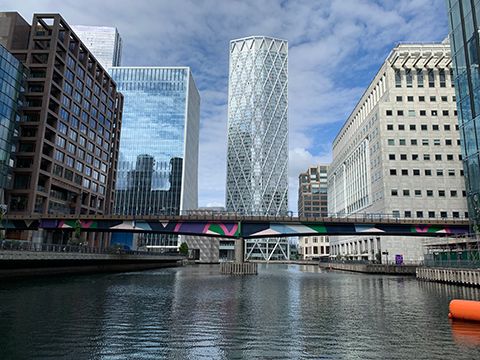
When I was in the UK back in July-August 2022 I was treated to a private tour of Canary Wharf by a friend who knows the area very well as he had an input into one of the world's first redevelopments of this kind: from an antiquated and decaying docklands into a thriving central business district of one of the world's foremost and favourite cities.
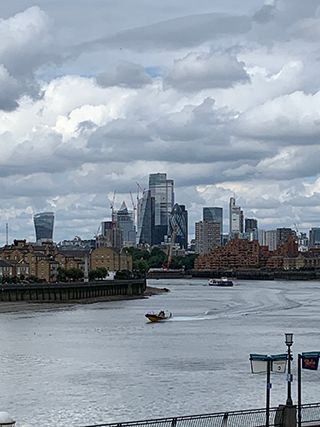
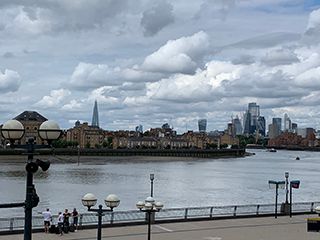
Canary Wharf is situated on the eastern edge of the city. The high-rise offices dominate majestically, showing off the remarkable architectural talent which become the sentinels for delightful pockets of gardens, outdoor community areas and yes - art in a multitude of styles of mediums. In fact, Canary Wharf has the largest collection of outdoor art in London.1
But first let us learn a little about the history and take a look at the buildings and then tomorrow we will wander the many pathways through the precinct and appreciate the art works.
Canary Wharf is located on the West India Dock on what is known as the Isle of Dogs. Back in the 1800s this was one of the busiest docks in the world. The name Canary Wharf comes from No. 32 berth of the West Wood Quay of the Import Dock. This was built in 1936 for Fruit Lines Ltd, a subsidiary of Fred Olsen Lines for the Mediterranean and Canary Islands fruit trade. It is located on the Isle of Dogs, the quay and warehouse were given the name Canary Wharf. 2
Interestingly the name Isle of Dogs supposedly came about because there were royal kennels in the area.3
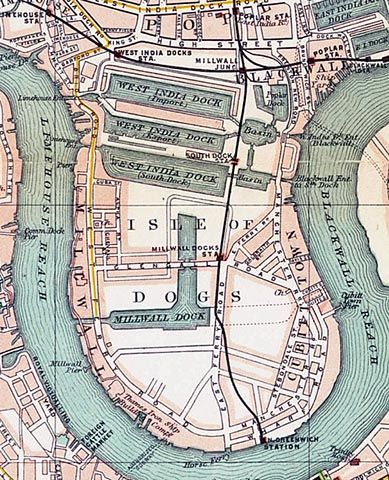
The West India Docks opened in 1802 and were considered to be the country’s greatest civil engineering structure of its day.3
The wonderful aquatint shown below was created by English landscape artist William Daniell (1769–1837) and depicts the newly-built West India Docks on the Isle of Dogs in east London. It was published by Daniell in 1802.4
Please note the title of the print which is very descriptive and nearly as long as the print itself!
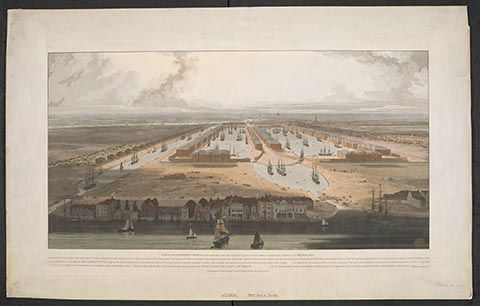
The Port of London Authority was established in 1909 and took control of West India Dock. 2
After the 1960s, when cargo became containerized, port industry began to decline, leading to all the docks being closed by 1980. After the docks closed in 1980, the British Government adopted policies to stimulate redevelopment of the area, including the creation of the London Docklands Development Corporation (LDDC) in 1981 and the granting of Urban Enterprise Zone status to the Isle of Dogs in 1982.2
In 1987–89 London City Airport opened and work began on Canary Wharf. If you would like to see some early photos of the construction work please click here.
Canary Wharf opened in 1991 with One Canada Square at the time being the tallest building in the UK (771 feet (235 m) above ground level) but has now slipped down to third spot.
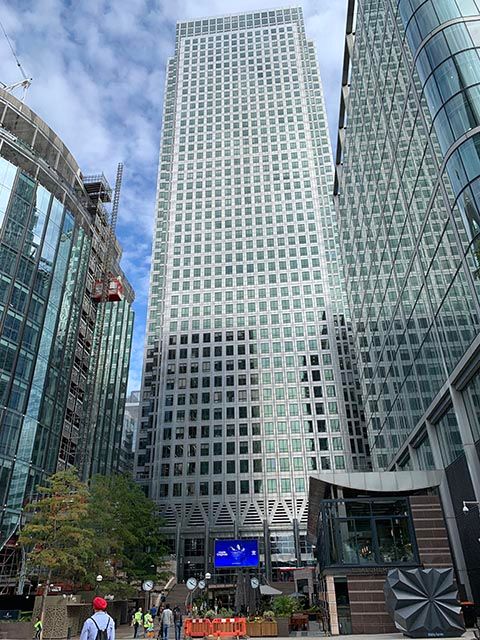
One Canada Square was designed by César Pelli with Adamson Associates and Frederick Gibberd Coombes. The building is clad with stainless steel. One of the predominant features of the building is the pyramid roof, which contains a flashing aircraft warning light, a rare feature for buildings in the United Kingdom. The distinctive pyramid pinnacle is 800 feet (240 m) above sea level.2
At the base of One Canada Square is a group of six clocks made from steel and glass. The clocks were the winning design created by Konstantin Grcic who won the competition back in 1983 for an art work to fill this public space.
Grcic's playful installation is based on the iconic Swiss railway clock but here each of the 12 faces shows a single and different numeral. German designer Grcic is best known for his furniture and product design. Based in Munich but working internationally, he has won numerous prestigious awards, including Honorary Royal Designer for Industry awarded by the Royal Society of Arts in 2009.1
My friend wears a watch in the same design as the clocks as a memento to the creation of Canary Wharf.
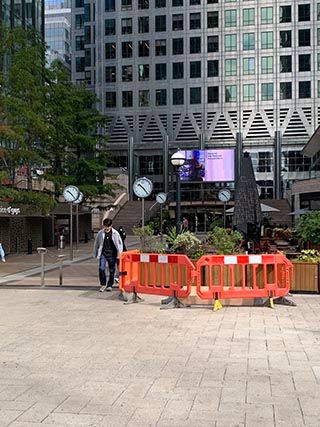
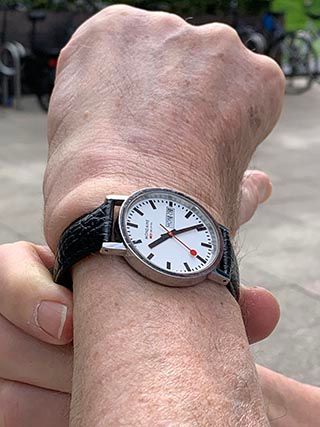
I think my favourite of the tall buildings would have to be the Newfoundland residential skyscraper which features in the first image of this post (above). Newfoundland was designed by architects Horden Cherry Lee and structural engineers WSP Global. The building was opened for rent in May 2021.2
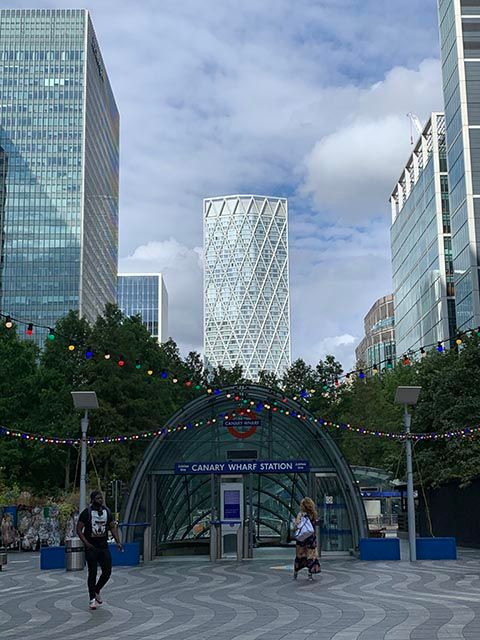
As you walk around the Canary Wharf precinct there are constant reminders of the early days of the area. Canals and ponds crisscross at every opportunity making for a very pretty and enticing environment.
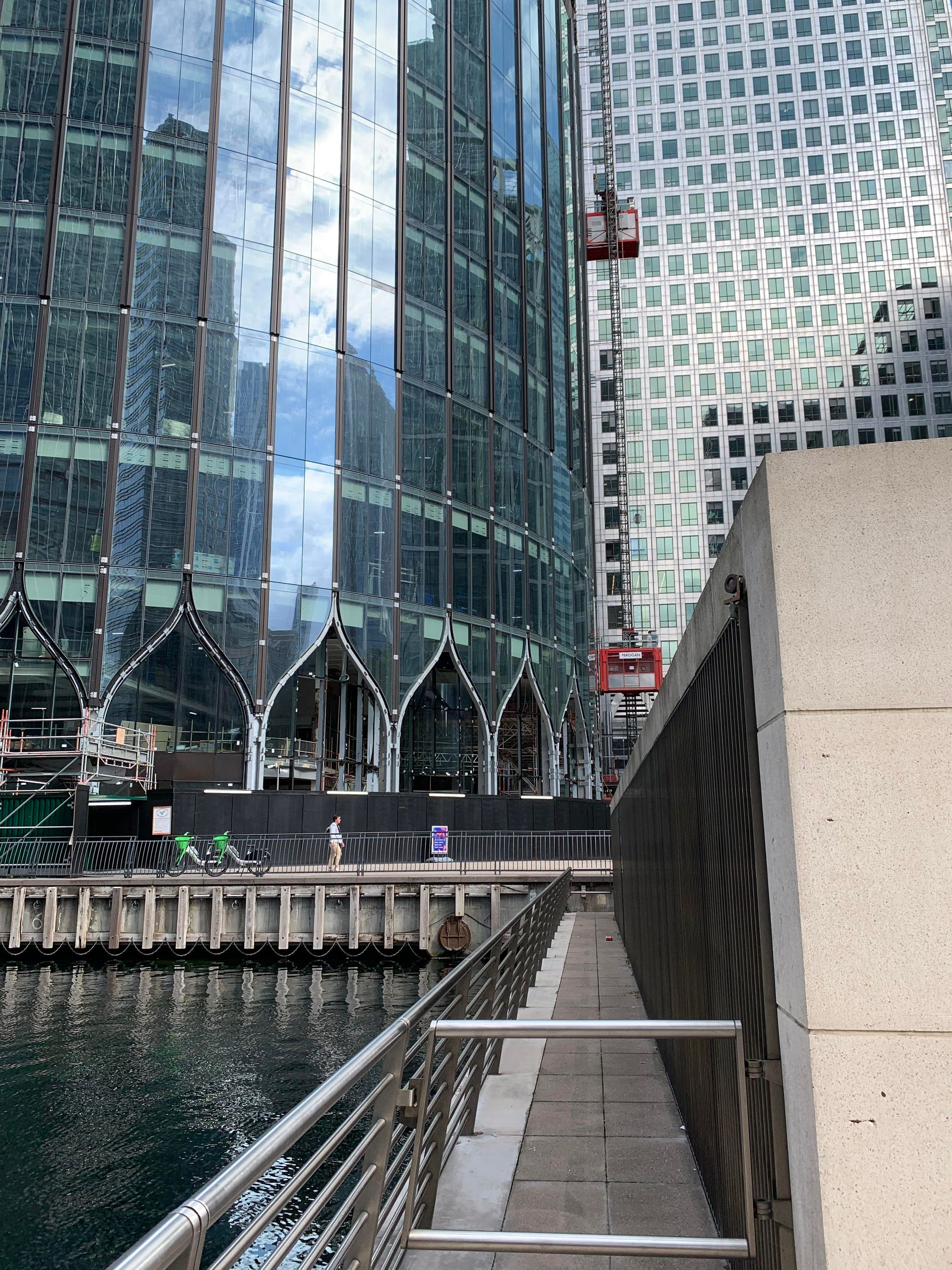
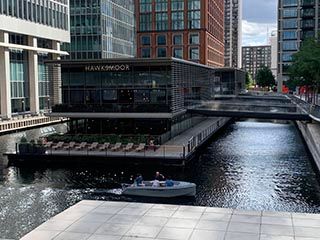
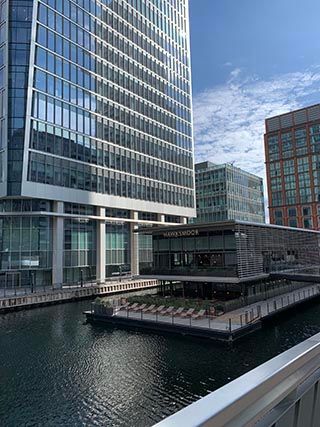
And there is definitely a nautical feel about the place with the row of warehouses lining an arm of the Thames a constant reminder of the shipping trade era. Plus many buildings have nautical shapes adding to the maritime character.
West India Quays and Poplar Dock are two marinas that are used as moorings for barges and private leisure river craft and is owned by the Canal & River Trust.2
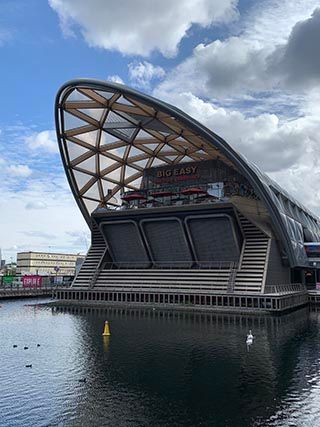
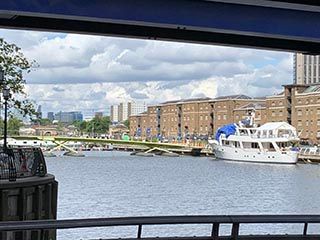
For anyone who loves glass Canary Wharf is a paradise as the architects have exploited every artistic angle that glass offers.
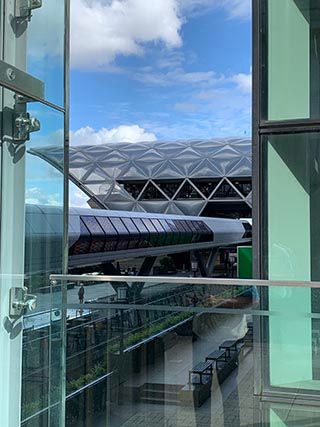
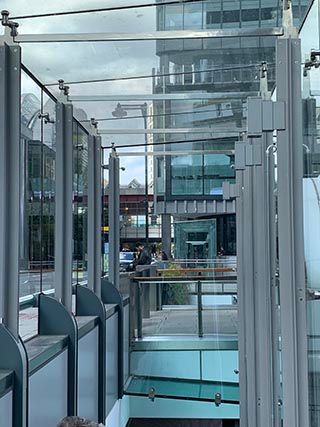
There really is a kaliedoscope of textures and shapes each way you look and it works! The area has a delightful ambience but then this might have been caused by the the company I was keeping as I received my personalised tour of what really is a fascinating development. Congratulations to the planners and architects as great thought has been given to the marriage of the buildings and their surroundings.
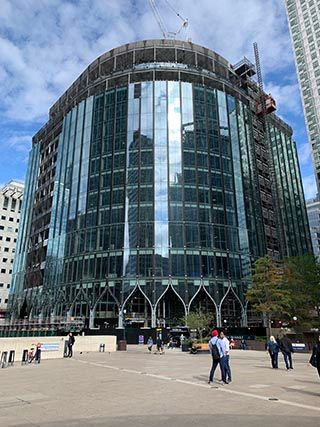
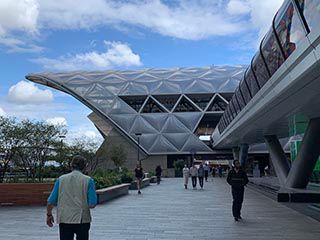
You might be forgiven for getting the impression that Canary Wharf is all skyscrapers, glass and water. But I was so surprised to find contrasting architecture as used for the Westferry Circus...
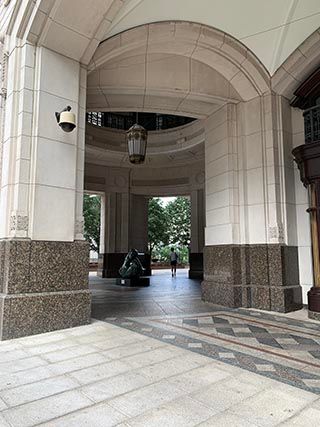
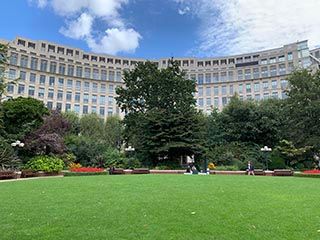
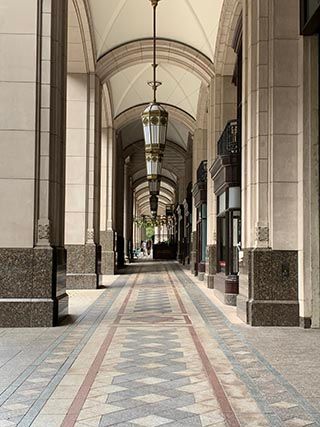
...and the gems of green areas and gardens for relaxing and socialising in.
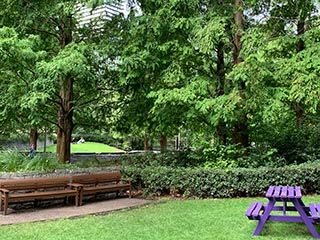
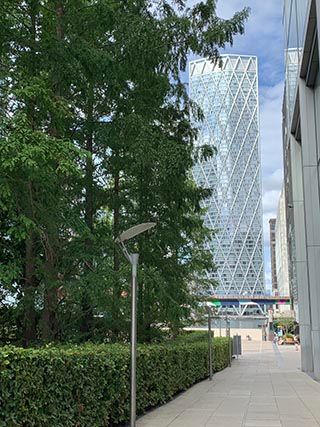
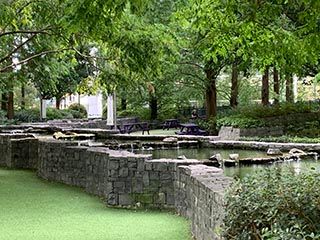
Tomorrow we are going to explore the art works and learn more about how important art is to the development of business districts.
Credits
1. canarywharf.com
2. en.wikipedia.org
3. medium.com
4. bl.uk
5. nhgsales.com
